IRF
IRF Uppsala
RPF programme
IRF-U Staff
Seminars
Courses
PhD studies
Examensarbete
Workshops
Cluster
...EFW
...Quicklook
Cassini
Rosetta
Solar Orbiter
Intranet
| INSTITUTET FÖR RYMDFYSIK | UPPSALA |
 |
|
| Swedish Institute of Space Physics | (59°50.272′N, 17°38.786′E) |

EISCAT -3D User
Meeting 2010
EISCAT-3D is a planned next
generation incoherent scatter radar facility, based on phased-array
technology and multiple radar sites. The EISCAT_3D proposal was accepted on the ESFRI Roadmap
of large-scale European research infrastructures in December 2008.
The EU, EISCAT, the Rutherford-Appleton
Laboratory (UK), the University of
Tromsø
(Norway), the Luleå
Technical
University
(Sweden), and the Swedish
Institute of Space Physics (Sweden) financed and undertook the EISCAT-3D design study. The results of the study were
presented at the previous EISCAT
-3D
User
Meeting
2009, and a final
report has been published.
In December 2009 EISCAT, in
lead of a consortium consisting of nine
partners, has
submitted a bid
for
the
Preparatory
Phase under the EU FP7-INFRASTRUCTURES-2010-1.A 2nd user meeting will take place in Uppsala, Sweden, on May 19-21, 2010. It will focus on planning for the Preparatory Phase of the EISCAT_3D project, which will begin in autumn 2010. Particular aims are:
- To present the
current plan of the EISCAT_3D Preparatory Phase project to the
user community
- To clarify the plans for the scientific programme of the new radar, including ideas from future users outside the traditional EISCAT community.
- To explore the possible uses of EISCAT_3D for service applications, in areas such as space weather and space situational awareness.
- To discuss the different options for the delivery of these operational requirements, in terms of the system configuration and its technical realisation.
The workshop will be in
lecture room 4101 of the Ångströmlaboratoriet
of the Uppsala University
on Wednesday, May 19, and the Beurling room on
Thursday and Friday, May 20-21. If needed, smaller meeting rooms for
splinter sessions are available.
Programme outline
with session
titles and schedule. Please
contact Esa Turunen
regarding suggestions.May 19, Wednesday:
- prenoon: arrival and registration of participants, informal
gatherings
11:00-13:00 Lunch with local space physicists and friends of IS radars - 13:00-13:30 Overview of the EISCAT_3D ESFRI project (Esa Turunen)
- 13:30-14:00 The EISCAT_3D Science Case (Ian McCrea)
- 14:00-17:00 Science applications of EISCAT_3D and resulting
requirements for the new facility (16 min incl. discussion each)
- Lower and middle atmosphere (Evgenia Belova)
- Atmospheric chemistry (Pekka Verronen)
- Upper atmosphere-ionosphere-magnetosphere (Stephan Buchert)
- Twisted radar beams (Thomas Leyser)
- Small scale structures (Hanna Dahlgren, Nickolay Ivchenko)
- 15:20-15:40 Coffee break
- Large scale processes (John Kelly)
- Dusty plasma (Cesar La Hoz)
- Meteors and dust (Asta Pellinen-Wannberg)
- Interplanetary Scintillations, Radio Astronomy (Andy Breen/Ian
McCrea)
- Service, space weather, space debris, etc (Mike Hapgood/Ian McCrea)
- 9:00-9:45 Recent EISCAT highlights (15 min each)
- Recent EISCAT highlights (Ingemar Häggström)
- Plans for World Days 2011 (Ingemar Häggström)
- Hydrogen and Oxygen upflow (Stephan Buchert, Yasunobu Ogawa)
- 9:45-12:00 Other science projects of relevance to EISCAT (present and future)
- AMISR developments (John Kelly)
- Middle atmosphere radars, Maarsy, Pansy (Yasunobo Ogawa, ...)
- EISCAT Aperture Synthesis Imaging, EASI (Nickolay Ivchenko/Cesar La Hoz)
- 10:30-10:45 Coffee Break
- LOFAR (Derek McKay)
- Onsala Radio Observatory/Onsala LOFAR site (Hans Olofsson)
- LOIS (Bo Tidé)
- Swarm (Stephan Buchert)
- Observation of Celestial and Atmospheric MeV-Gamma-Rays using
a
Wide Field of View Electron Tracking Compton Camera with Balloon
Borne Experiment (Toru Tanimori)
- 12:00-13:15 Lunch
- 13:15-15:03 Presentation of technical concepts and
designs,
particularly on antennas, receivers, and digital signal processing (18
min each)
- A LOFAR station as VHF receiver in Finland (Markku Lehtinen)
- Aperture Synthesis Imaging Radar (ASIR) capabilities of the EISCAT_3D system (Markku Lehtinen)
- Imaging with EISCAT_3D (Cesar La Hoz)
- OAM (Bo Tidé)
- Antenna Technology for the EISCAT_3D Radar (Tore Lindgren)
- On the use of EISCAT measurements in technological applications (Biagio Forte)
- 15:03-15:33 Coffee Break
- 15:33-17:03 Radar coding and analysis methods
- EISCAT 3D as a diagnostic for artificial ionospheric heating
(Mike Rietveld)
- 3D ionospheric electrodynamics and EISCAT 3D (Olaf Amm)
- An introduction of multi-purpose modulations (Ilkka Virtanen)
- Random thoughts on radar transmission coding and analysis (Juha
Vierinen)
- Venabili (Paul Gallop)
- 9:00-10:00 Overview of the EISCAT_3D Preparatory Phase
- 10:00-11:00 WP3 of the EISCAT_3D Preparatory Phase, Science
Planning and User Engagement
- 11:00-12:00 Summaries and future actions